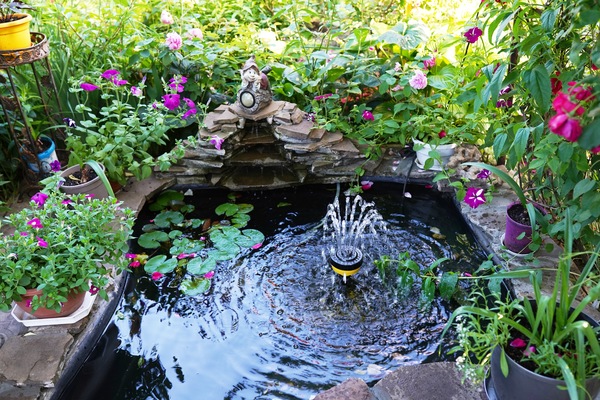
While the combination of sun, pollen or dust and water will inevitably result in some algae formation in your fountain or birdbath, simply adding one tablespoon of hydrogen peroxide per gallon of water every week or so will allow you to maintain clear and sparkling water throughout the year. With no impact to humans, plants or wildlife, this is a safe and economical alternative to many harsh and/or expensive chemicals out there. You can experiment with a bit more, a bit less, or a bit more often. Do not use chlorine-based water treatments as this corrosive chemical makes the tubing, inner connections and pump parts brittle. It will also have an undesired bleaching effect on the finish.
Depending upon temperature and evaporation, you may encounter a buildup of white residue on the surfaces of your fountain. This is unavoidable in areas with high mineral content
in the water supply. More frequent rinsing of the fountain and replacement of the water will
help to minimize this occurrence. Using distilled water, or water from a water softener, will
respectively eliminate or reduce mineral buildup.
You can put fish in your fountain, but not right away. A freshly produced and finished fountain continues to cure and releases minerals into the water that are not the best for an aquatic living environment. After a few months, perhaps a full year, of continuous use, it should be OK. Some fish require a set ph level. Some creatures could be very sensitive to turbulence, such as the fountain’s spills creating too much water movement. It is best to consult your pet professional for a successful experience.
For questions or concerns about your fountain, email productsupport@henristudio.com or
call 1-800-323-4784.